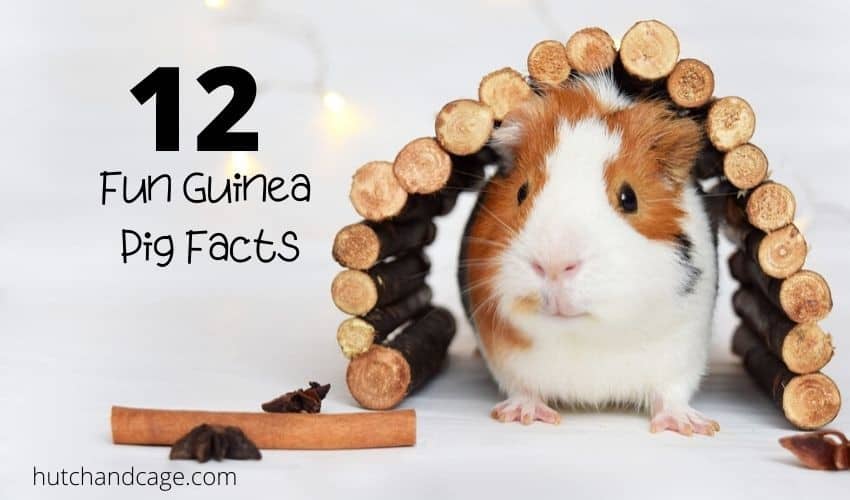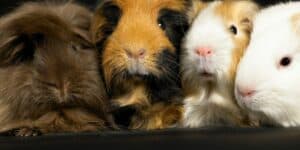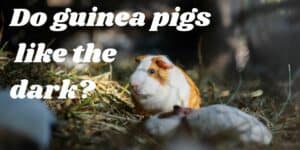Guinea pigs are one of the most popular pets to keep at home. They are known for their cuddly soft coats and bubbly personalities.
We love ours and to help you see why we have come up with 10 Fun Facts about the Guinea Pig.
Guinea pigs are very sociable pets and love to run around and explore their home. Often bursting into life and sprinting as fast as they can. They love to play and interact with their owners.
Guinea pigs adapt faster than most other pets and easily adjust to their surroundings.
They make great family pets that are suitable for children. Just ensure your child is not too young and they understand how to handle and play with your guinea pig correctly.
Let’s learn some fun facts about Guinea Pigs. Some you simply won’t believe!
Table of Contents
10. Their name
Guinea pigs are a domesticated species of the rodent (Cavia Porcellus). The meaning of their name has always been elusive. They are neither pigs nor do they come from New Guinea.
According to some people, they got their name from the squealing sounds and strange noises they make.
Some say it came from the price of a Guinea Pig in 1600 century England, which was One Guinea. Either way, the name stuck and has been used ever since.
9. Where Do Guinea Pigs Come From?

Guinea pigs originate from the Andes in South America. The Incas domesticated guinea pigs over 3000 years ago; they were kept as pets as well as for food.
At the end of the 1600 century, Spanish conquistadors transported Guinea Pigs back to Europe where they became popular pets amongst Elizabethan society.
8. Bones
There are 258 bones that make up a Guinea Pig’s skeleton. Despite their small body, they have 258 bones made up of 34 in the spinal cord, 43 in each front leg and 36 in each back leg with the rest of the bones being in the skull, ribs and breast bone.
7. They Eat Their Own Poo
Yes, that’s right Guinea Pigs eat their poo. Disgusting I know. They don’t eat the poo and droppings we clean up from their cage though.
You will often see them with their heads between their legs from which they come up chewing something. This is poo.
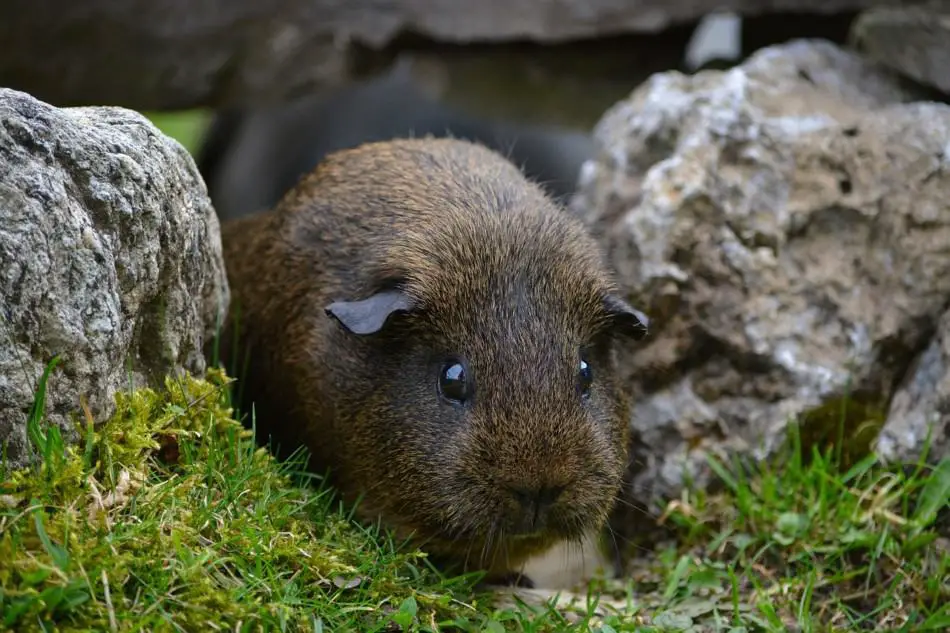
Their poo contains lots of vitamin B and Amino acids which they need to survive. It is essential your guinea pigs receive the right amount of vitamins and minerals some of which are in their poo.
Eating poo is normal behavior for a guinea pig and should not be discouraged.
6. Sexual Maturity
Guinea pigs can reach sexual maturity within 3 weeks. Unlike other species, these pets start to mate within 3 weeks and often become parents at an early age.
It is, however, important that the sow is under 7 months for a first pregnancy to prevent the conditions of symphysis and dystocia.
Breeding Guinea pigs is not for the faint-hearted. Guinea pig sows have a high mortality rate associated with pregnancy ketosis, which is a metabolic problem where the sow slowly poisons herself and dies of blood poisoning.
Breeding guinea pigs comes with a lot of risks and often leads to your beloved pet dying during pregnancy and birth.
5. Oldest Guinea Pig
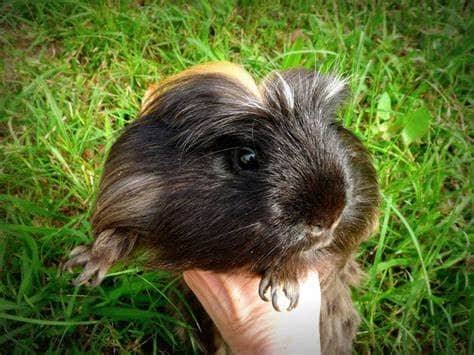
The average guinea pig lives between 4-6 years. However, the oldest guinea pig that ever lived was Snowball.
Snowball who entered the Guinness Book Of Records lived for 14 years and 10.5 months old. The average life expectancy of guinea pigs is about 4 to 7 years. Snowball died in February 1979.
4. Hair
Guinea pigs have five different types of hair that make up their coat. However, not all guinea pigs have fur. There is a breed of guinea pig which some pet owners adopt; they call it the skinny pig, which is a mostly furless breed.
This is truly a strange-looking pet and not one that screams out ‘Cuddle Me’!
3. Guinea Pigs In Space

The Russian spacecraft ‘Sputnik 9’ was the first space craft to carry Guinea pigs into space. It was launched on 9th March 1961.
Other animals on the orbital space flight included a dog called Chernushka; mice and reptiles. All of the animals returned alive.
2. Guinea Pigs Have Their Own Language
Guinea pigs make a lot of noise and communicate with other guinea pigs in different ways. The primary way your guinea pig will communicate is through a series of squeaks, chirping and making wheeking sounds.
All the different sounds have a meaning and can indicate there is either a problem or that your guinea pig is happy.
Either way, it’s nice to be able to understand your pet guinea pig by learning some of their sounds. Read our article on how to stop your guinea pig fighting and making strange noises.
- Purring – This is a sign of contentment or if the sound is a deep purr is could be from a male (Boar) when courting.
- Rumbling – A much deeper/low sound used to express dominance, fear, tension or anger to other guinea pigs.
- Whining – A noise made during pursuit by a pursuee.
- Chattering – Gnashing of the teeth used to raise a warning sign that your guinea pig is not happy.
- Chirping – This often indicates that baby Guinea pigs or pups as they are known, want to be fed. It may also be made when a Guinea pig is stressed or unhappy.
- Squealing – A high-pitch squeal is usually a sign that your guinea pig is in pain or imminent danger.
- Wheeking – This is the most common noise associated with guinea pigs. It’s a whistling noise that Guinea Pigs use to express excitement (e.g. at feeding time) or to help locate other Guinea Pigs.
1.Largest Guinea Pig Ever
The largest Guinea Pig to ever walk the earth was the giant, now extinct Phoberomys pattersoni.
This animal weighed in at 700 kilograms and lived eight million years ago, roaming the lush banks of the ancient Orinoco delta in northwestern Venezuela.
But the three-meter-long, 1.3-meter-tall behemoth was an evolutionary cousin of today’s humble guinea pig.
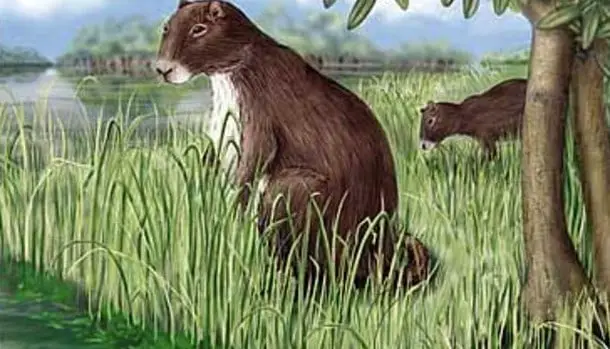
The biggest domesticated Guinea Pig is in the Guinness Book of Records and weighed in at a whopping 27 lbs.
Bonus Facts
- Longest jump by a guinea pig: The longest jump by a pet Guinea Pig was made by a Guinea Pig in the United Kingdom called Truffles who managed to jump a gap 48cm.
- Fastest guinea pig ever recorded: The fastest run of 10 m (32.81 ft) by a guinea pig was achieved by Flash, who ran the distance in 8.81 seconds, in London, UK, on 27 July 2009.
- The oldest Guinea Pig: The oldest pet Guinea Pig lived for 14 years and 10.5 months old and was named Snowball
- How many teeth do Guinea Pigs have: Guinea pigs have 20 teeth which never stop growing until the day they die.
- They have an odd number of toes. Guinea pigs have four toes on their front feet, but only three on their back ones.
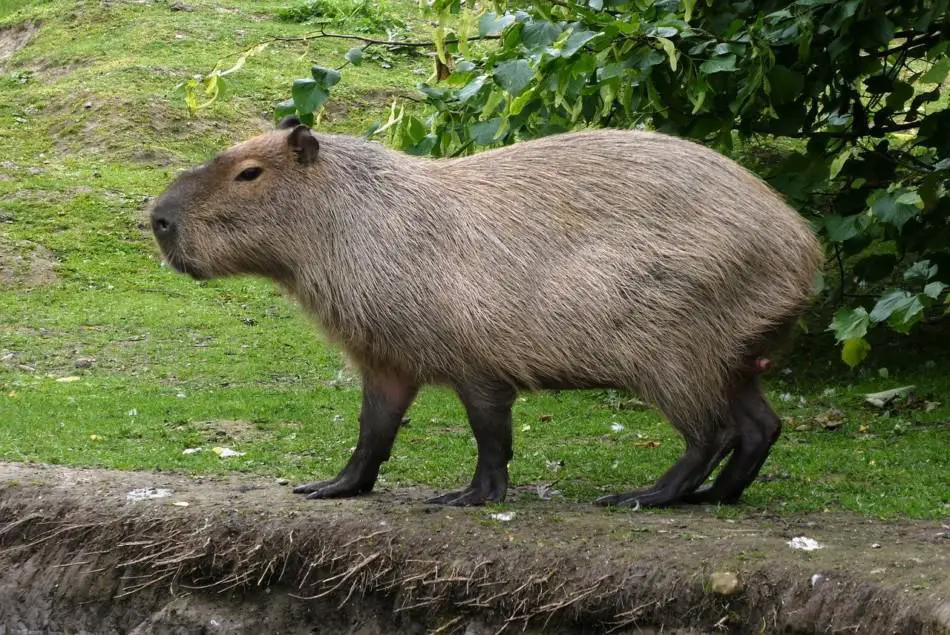
Are Guinea Pigs fast?
If given the room, guinea pigs can run about 6 miles per hour. This is twice as fast as the average human walking speed!
Do guinea pigs have an odd number of toes?
Yes, guinea pigs have an odd number of toes on their back feet. Their front feet have four toes, but their back feet only have three!
What are guinea pig babies called?
Guinea pig babies are called pups. Many people think that since they are called guinea pigs that baby guinea pigs would be called piglets.
What are cavies?
A cavy is a guinea pig. The proper name for a guinea pig is Cavia Porcellus. Cavy for a singular guinea pig, or cavies for multiples guinea pigs, are another name for a guinea pig that derives from their genus Cavia.
Conclusion: 10 Fun Facts About The Guinea Pig
Now you can see why we love our Guinea Pigs so much. These now domesticated pets are wonderful animals to keep. Just remember to care for them gently and give them as much room as possible.
Small cages from the pet store are simply too small.
Try to create the best environment you can with plenty of toys, tunnels and carefully selected treats.
We hope that we have whet your appetite to buy a Guinea Pig. Do your research first so you understand your role in providing the best possible home for them and never rush out unprepared to keep them.
- Can Guinea Pigs Wear Diapers? (Is It Cruel?)
- Best Wooden Guinea Pig Hutch 2023 | Top 7 Reviewed
- What is a Group of Guinea Pigs Called?
- Can Guinea pigs get fleas? ( You have to know this )
- Do guinea pigs like the dark? ( Facts )
- How Big Do Skinny Pigs Get ( Why so small? )

